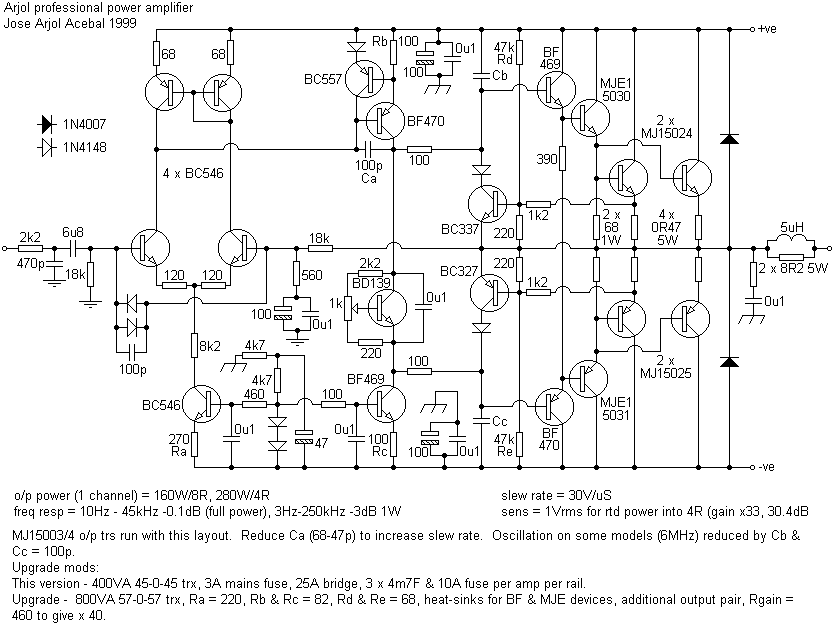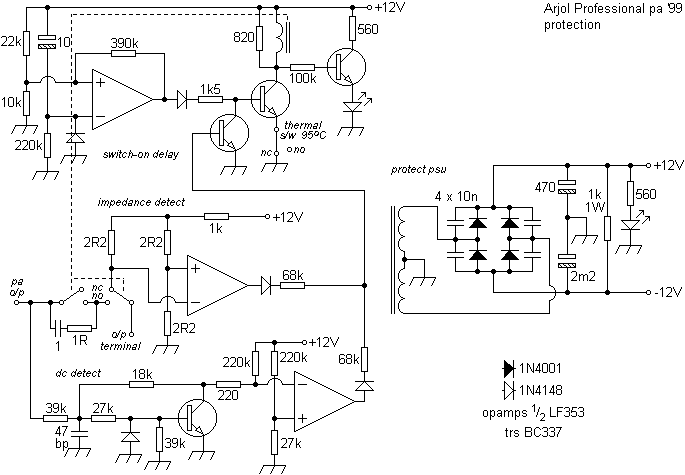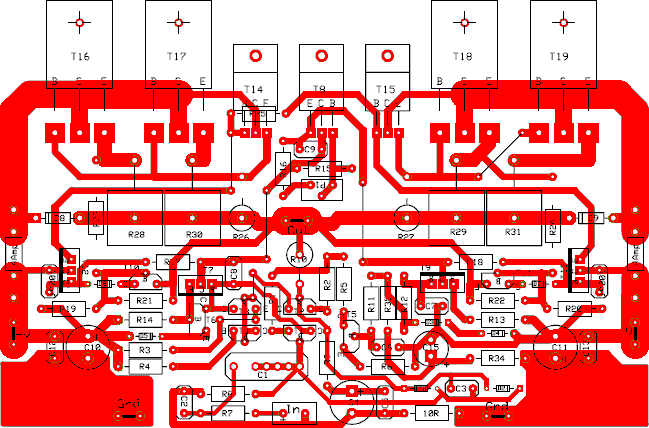Arjol professional power amplifier
Jose Arjol Acebal considered the need for rugged design for some professional applications (data courtesy of Nagarajah Shanmugam). A common board that upgrades easily (in this case to 400W/4R) is desirable for PAs and this design embodies what most would call good practice.

Distortion is described as below the error of the test gear with bias currents of 5 to 40mA per device. The designer recommends matching the input pairs, their relevant resistors and the output devices. Whilst the performance of the amplifier is more than sufficient to meet most sonic needs, protection is given a priority, another requisite for stage use, apart from the input and output clamping and output current limiting in the output stage.

The imbalance between the protection circuit's supply smoothers, in conjunction with the bleed resistor across the rails, allows a fast relay shut-down on power off. The time delay uses an RC constant of about 2 secs, the impedance detector trips with a load of less than 2R2 and the DC detect triggers with offsets of about ±1.5V. The two relay contacts in series with the output could cause problems when worn or dirty.
Useful indicators can be clip and source detectors, the former of which could be used to trigger another circuit, especially if no metering is available on the amp itself. With the impedance detector these can quickly identify shorted or open speakers that can then be unplugged from an array.

The clip detector measures the voltage across the output devices (greater sensitivity with 5V6 zeners) and the signal detect lights on any output signal exceeding about 2.7V. Original version mounted uninsulated output devices on isolated heat-sinks forming a 'tunnel' force-cooled by a fan at one end, giving a 10-15°C differential between the outermost transistors.
Nagarajah has produced a PCB layout for the amplifier (copies of original PDFs available upon request).

The PA300 power amplifier by A. Riedl (elektor 11/1995), based on an earlier 600W design with five output pairs (the ’PA 600’ was first published in the German magazine ’Elrad’ in 1990), might be of similar interest to the reader.
especially if you want additional content to this page
or if you find any links that don't work. Don't forget
to add the page title or URL. Take care!